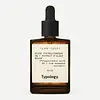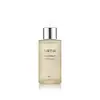What's inside
What's inside
 Key Ingredients
Key Ingredients

No key ingredients
 Benefits
Benefits

 Concerns
Concerns

 Ingredients Side-by-side
Ingredients Side-by-side

Water
Skin ConditioningDipropylene Glycol
HumectantGlycerin
HumectantHamamelis Virginiana Extract
AntiseborrhoeicButylene Glycol
HumectantArginine
MaskingCarbomer
Emulsion StabilisingCaprylyl Glycol
EmollientBetaine
HumectantAllantoin
Skin ConditioningPanthenol
Skin ConditioningCamellia Sinensis Leaf Extract
AntimicrobialRosmarinus Officinalis Leaf Extract
AntimicrobialChamomilla Recutita Flower Extract
MaskingCentella Asiatica Extract
CleansingGlycyrrhiza Glabra Root Extract
BleachingAdenosine
Skin ConditioningDisodium EDTA
Polygonum Cuspidatum Root Extract
AntioxidantScutellaria Baicalensis Root Extract
AstringentIllicium Verum Fruit Extract
PerfumingSodium Hyaluronate
HumectantPolyglutamic Acid
Skin ConditioningNatto Gum
Copper Tripeptide-1
Skin ConditioningAcetyl Hexapeptide-8
HumectantPalmitoyl Pentapeptide-4
Skin ConditioningWater, Dipropylene Glycol, Glycerin, Hamamelis Virginiana Extract, Butylene Glycol, Arginine, Carbomer, Caprylyl Glycol, Betaine, Allantoin, Panthenol, Camellia Sinensis Leaf Extract, Rosmarinus Officinalis Leaf Extract, Chamomilla Recutita Flower Extract, Centella Asiatica Extract, Glycyrrhiza Glabra Root Extract, Adenosine, Disodium EDTA, Polygonum Cuspidatum Root Extract, Scutellaria Baicalensis Root Extract, Illicium Verum Fruit Extract, Sodium Hyaluronate, Polyglutamic Acid, Natto Gum, Copper Tripeptide-1, Acetyl Hexapeptide-8, Palmitoyl Pentapeptide-4
 Reviews
Reviews

Ingredients Explained
These ingredients are found in both products.
Ingredients higher up in an ingredient list are typically present in a larger amount.
Polyglutamic Acid is made up many glutamic acids chained together. It is created from bacterial fermentation.
This ingredient is an effective skin hydrator and may help speed up wound healing. As a humectant, it draws and holds water to the skin. This ingredient is often compared to hyaluronic acid or glycerin. Similarly to hyaluronic acid, it can vary in molecular weights. This means polyglutamic acid is capable of bringing hydration to lower levels of the skin.
Fun fact: Polyglutamic Acid is found in the Japanese food, natto. It is also being used in cancer treatment studies.
Learn more about Polyglutamic AcidWater. It's the most common cosmetic ingredient of all. You'll usually see it at the top of ingredient lists, meaning that it makes up the largest part of the product.
So why is it so popular? Water most often acts as a solvent - this means that it helps dissolve other ingredients into the formulation.
You'll also recognize water as that liquid we all need to stay alive. If you see this, drink a glass of water. Stay hydrated!
Learn more about Water